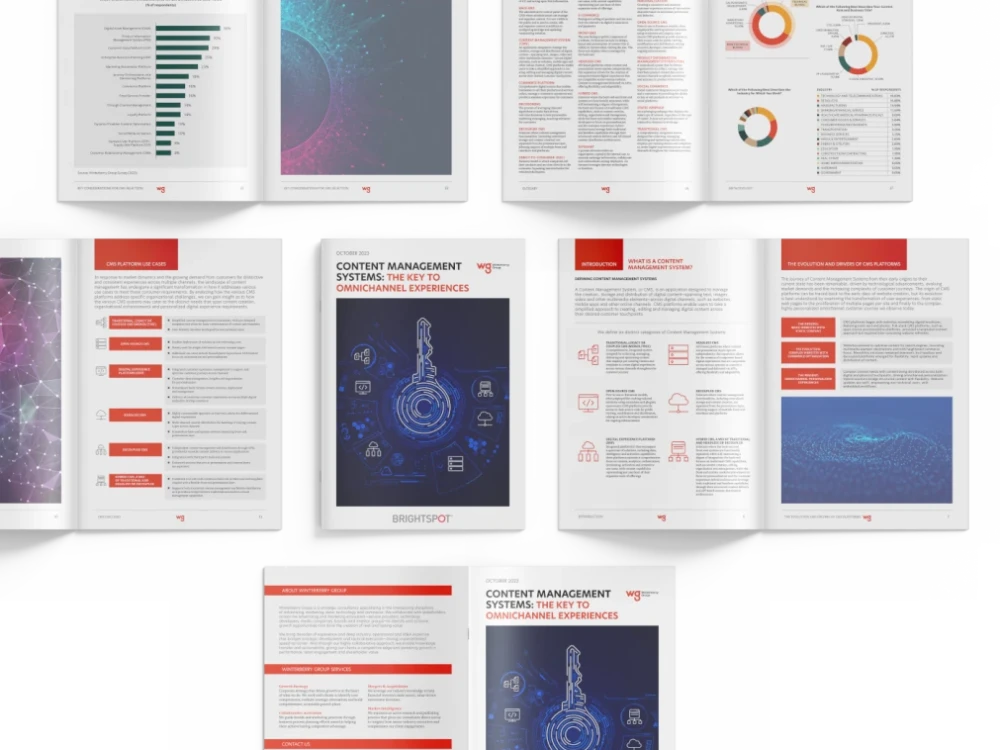
Infographic: Guide to the total cost of CMS ownership
The cost landscape of content management systems (CMS) varies depending on the architecture or type you adopt. Ultimately, the total cost of ownership is a balance of predictable expenses, managed services and investment in innovation. In this infographic, we pulled out key data from our complete CMS guide, commissioned by Winterberry Group, to help you understand the drivers and evolving nature of these costs.*
Let’s dive in.
* Source: 150 U.S. decision makers surveyed via commissioned Winterberry Group Survey (2023)
Let’s dive in.
* Source: 150 U.S. decision makers surveyed via commissioned Winterberry Group Survey (2023)

Current annual CMS costs
Survey respondents were asked about their current annual CMS costs. Of those willing to disclose their costs, 41% spend over $100k per year and 55% spend between $50–100k per year.
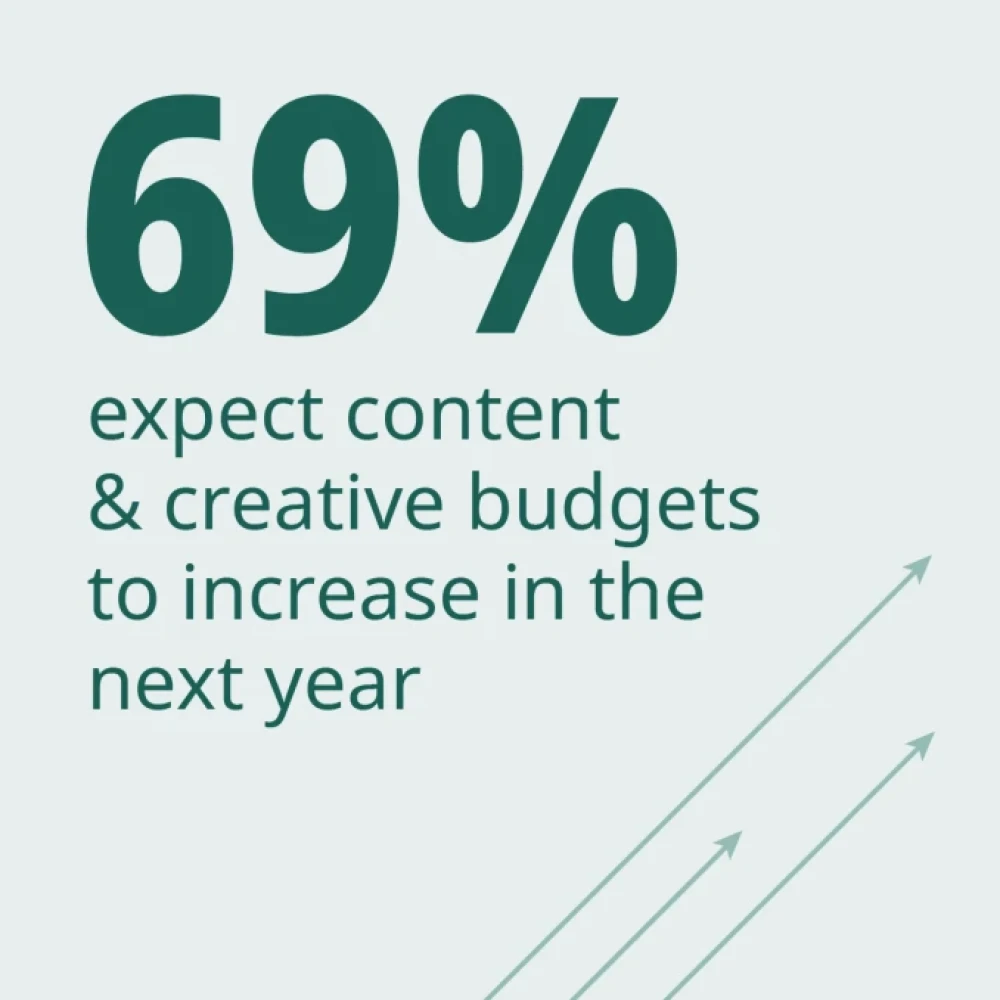
Future cost expectations
Regardless of current CMS costs, the large majority of decision makers are anticipating content-related spend to increase in the next year.
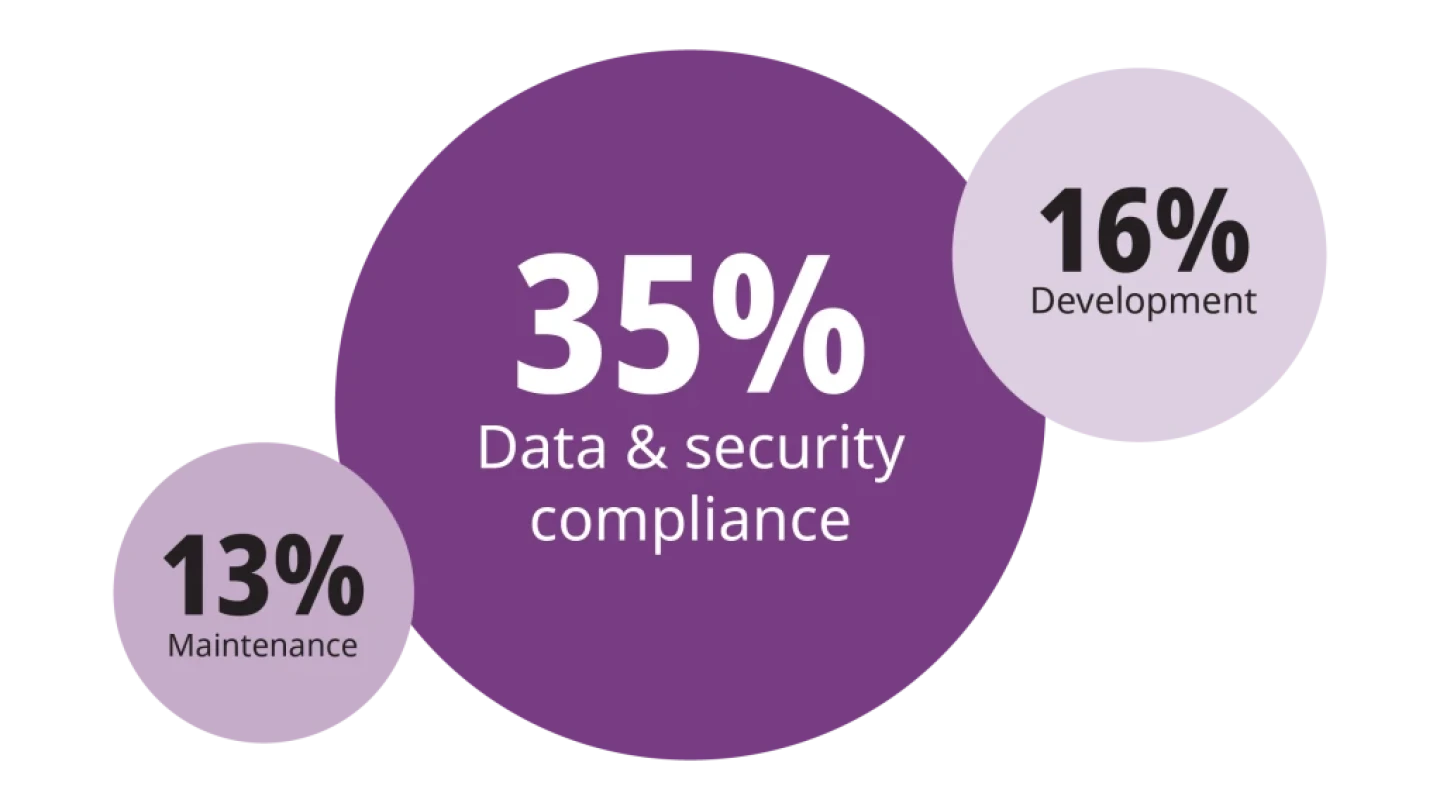
Top 3 CMS costs
Across the board, organizations identify data security and compliance, development and maintenance as the primary cost categories associated with their chosen CMS (regardless of CMS type).
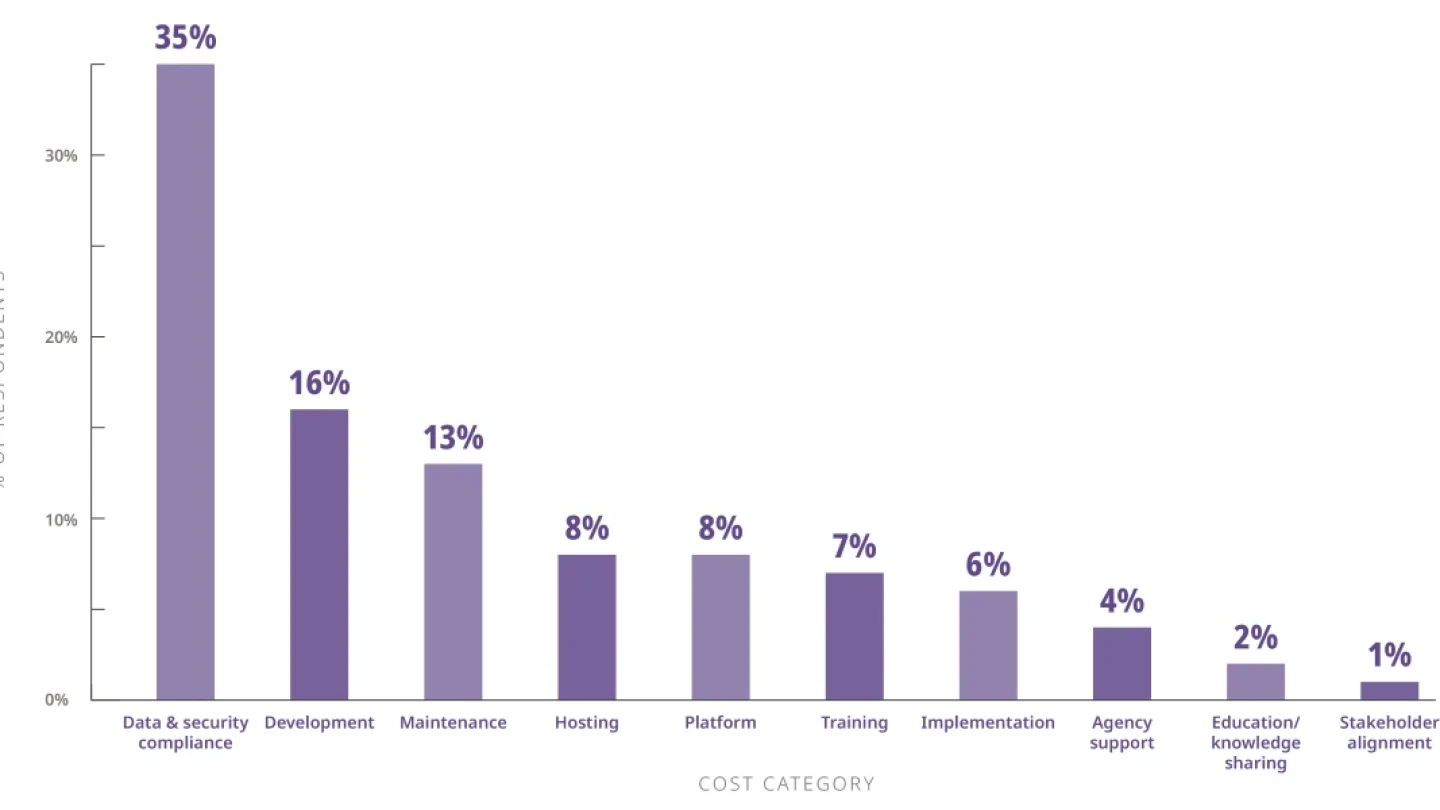
Most significant CMS costs
Below is a breakdown of how respondents ranked all CMS cost categories (including the top three mentioned above).
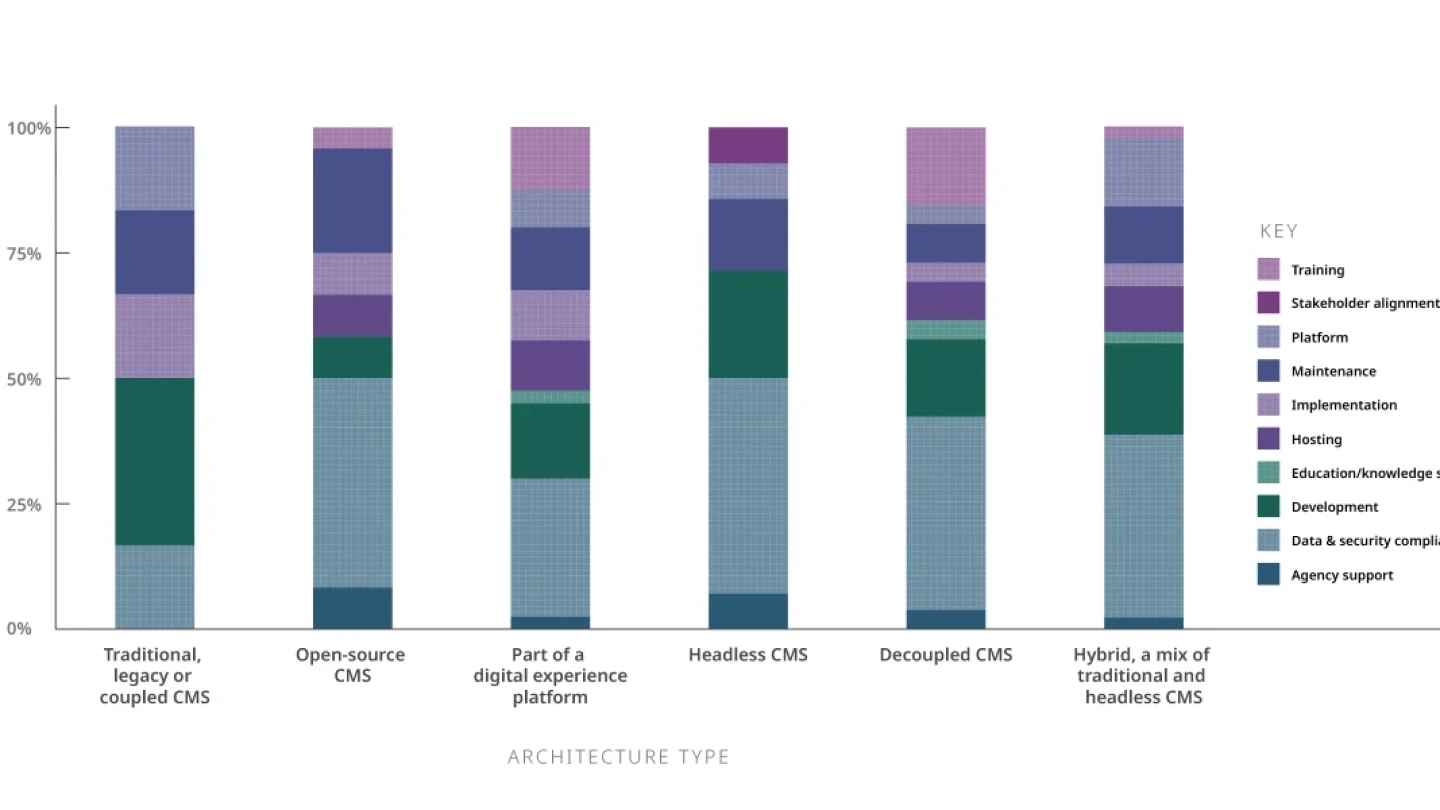
Costs by architecture type
While several cost considerations remain consistent across all CMS platforms—like development, maintenance and implementation—others assume a more prominent role based on the platform or architecture type chosen.
Primary CMS cost drivers change over time
While certain costs remain relatively stable throughout the CMS lifecycle, some cost drivers are prone to change over time. You’ll want to evaluate both the technical infrastructure demands and the resource prerequisites of your business when choosing a CMS, since these factors have substantial influence on your associated costs.

First 6 months
During the initial stage of implementing a CMS, a significant portion of the budget is allocated to setting up and configuring the system according to the organization’s requirements. This cost drops significantly with time.
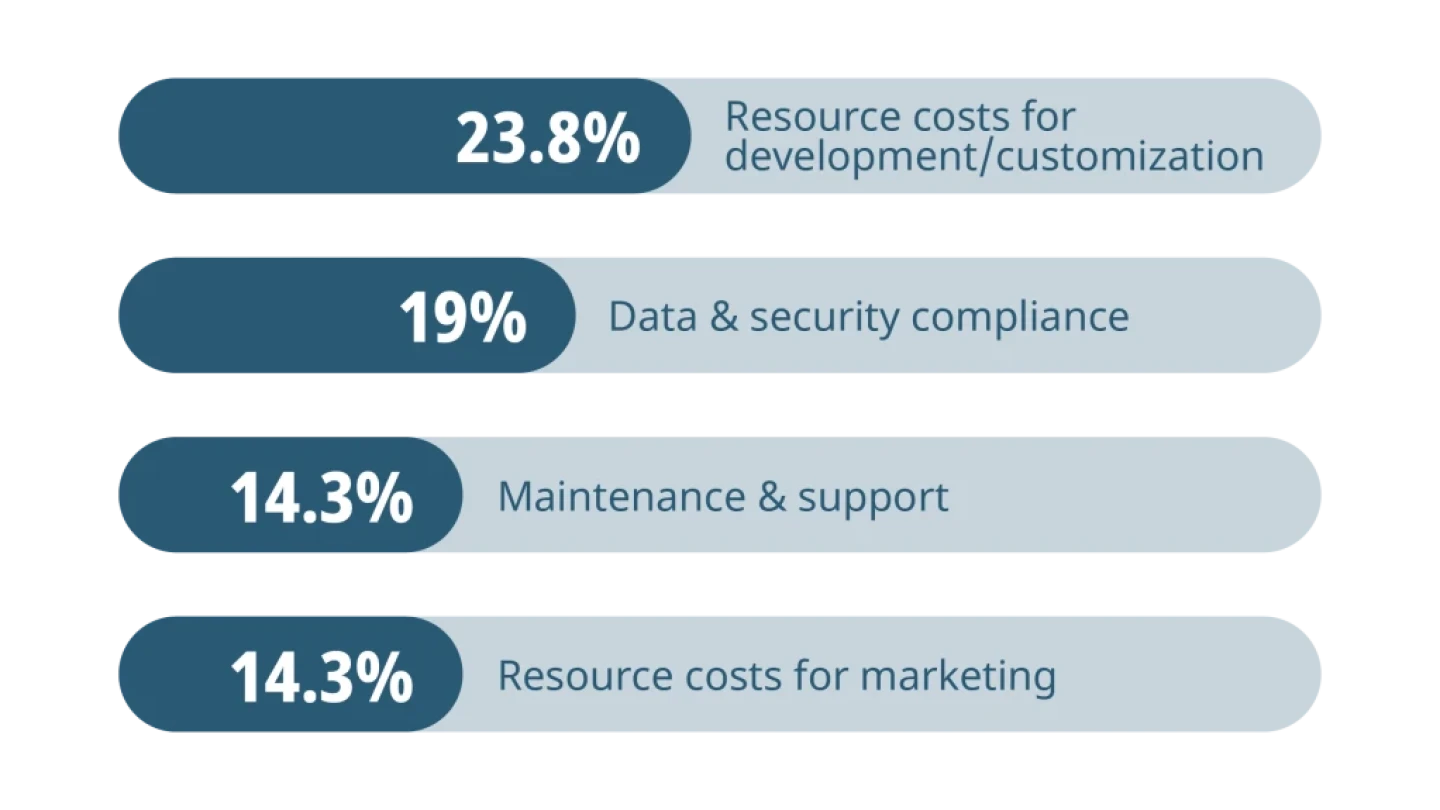
6 months to 1 year
As the CMS settles into the organization’s workflow, the focus shifts towards further development and customization. This includes hiring developers or agencies to create custom features, functionality or integrations tailored to the organization’s specific needs.
Following initial implementation, organizations also start allocating more resources towards marketing efforts related to the CMS, such as creating content or campaigns and optimizing SEO.
Following initial implementation, organizations also start allocating more resources towards marketing efforts related to the CMS, such as creating content or campaigns and optimizing SEO.
Dive into the rest of our complete CMS guide to learn what it takes to choose a content management system that future-proofs your business. Get real-life examples and insights from industry experts around the importance of omnichannel content support, AI-powered content creation and data-driven personalization.



